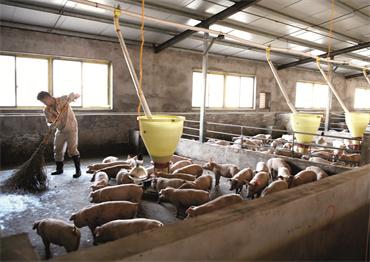Wu Qiyi, a farmer from Jing County in Anhui Province who works with a branch company of Zhengbang subsidiary Zhengnongtong (ZNT), delivered 959 pigs to the company on July 6, 2021. As their contract shows, ZNT provides piglets and feed to Wu, who raises them and sells them back to the company at fixed prices.
Two months later, the company informed Wu it would pay 1.5 yuan (US$0.2) and 1.05 yuan (US$0.14) less per kilogram for quality and sub-par pigs than previously agreed.
In addition, the company denied Wu her 50,000-yuan (US$7,216) deposit and forced her to pay 36,466 yuan (US$5,263) in feed storage facilities out of pocket – all without explanation.
First, Wu sought to settle. She asked for another 100 yuan (US$13.79) for each of the 949 quality pigs, which in total was still much lower than the contract price. But the company refused. In May 2022, Wu sued ZNT for the contract price, plus half the cost of feed storage fees and her deposit.
The company argued Wu’s contract, signed in September 2020, only applied to her first batch of pigs. However, since no new contract was signed, the court ruled it extended to 2021.
“Even though the market changed during the contract period, the company should have a sense of risk control and not transfer risks to the farmers,” the court wrote in its verdict. The court ruled that ZNT was in breach of contract and awarded Wu her settlement price and her deposit. The company appealed, and lost.
Zhai Heping, another farmer in the same county, also fell on hard times. Zhai signed a contract with ZNT in December 2020. He paid a 62,650 yuan (US$9,042) deposit for 1,000 piglets.
On June 21, 2022, the company promised to buy back 315 of the pigs on July 6. But a day before, the pigs began dying off for unknown reasons. Zhai contacted the company for help, but received none. Ten days later, all the pigs were dead.
The company sued Zhai, claiming that he secretly sold 241 pigs on June 5, 2022 and demanded 557,654 yuan (US$80,480) in damages, plus 110,000 yuan (US$15,875) for breach of contract. Zhai countersued the company for his deposit and unpaid breeding fees.
After an investigation, the court decided that ZNT’s claim was baseless and neither party was at fault. The company appealed, but a higher court upheld the ruling, pointing out that ZNT had not provided on-site guidance, and therefore shared responsibility for the pigs’ deaths.
Zeng Jianfeng, of Dongkou County, Hunan Province, is among the many farmers who went millions of yuan in debt to cover the deposit. Judgment documents show that Zeng borrowed 5 million yuan (US$721,594) from Shuangbaotai Group’s financial arm, and never made the money back.
After signing with Shuangbaotai Group’s branch in Huaihua, Hunan Province, Zeng said he raised 2,820 pigs for the company but over 1,700 died on the farm. Then the company demanded Zeng pay more than 4.25 million yuan (US$613,355) in compensation for the deaths, claiming that his on-site surveillance cameras went offline several times. The company also accused Zeng of refusing to hand over the live pigs, and ignored health regulations for feeding. Zeng claimed the pigs had contracted swine fever from a company feed truck that carried the disease from another farm.
Some farmers took to social media, claiming they had not been paid for months or received new batches of piglets.
Court documents from other similar cases reveal how companies refuse to return deposits to farmers. In cases of swine fever, companies usually refuse to pay farmers for their labor and breeding facilities. In response, some farmers refused to hand over the pigs.

 Old Version
Old Version

